
LOOMIO is free and open-source software for anyone, anywhere, to participate in decisions that affect them.
“The world needs a better way to make decisions together. #Loomio is building it. You can help: http://thndr.it/1kaQhmy”

LOOMIO is free and open-source software for anyone, anywhere, to participate in decisions that affect them.
“The world needs a better way to make decisions together. #Loomio is building it. You can help: http://thndr.it/1kaQhmy”

Big Data: Large Dataset Curation & Sharing with AcademicTorrents
AcademicTorrents is a new web service which allows any organization owning large datasets (no size limits) to easily distribute them without needing a dedicated infrastructure. The brainchild of Joseph Cohen and Henry Lo, two PhD students working at the University of Massachusetts in Boston, Academic Torrents facilitates the job of researchers, journalists and information analysts in finding, accessing, curating and downloading large-size datasets. Technically-speaking AcademicTorrents is a bittorrent-type redundant high-speed network and a full distributed system for sharing enormous datasets. As a P2P system it doesn't require intermediate servers, is also fully scalable, secure, fault-tolerant and can act as a reliable repository for data allowing fast downloads. Users can also search the full index, and can create curated datasets collections containing any kind of files and which can be downloaded as a full bundle. This type of system could prove to be an excellent resource for libraries storing digital papers as they would store books, and for simplifying the distribution requirements of any organization needing to publish, curate and share large datasets. “A robust distributed replication design allows libraries to utilize this system as their backbone. Providing fault tolerant hosting of curated data for a university, research lab, or home library. …Also, this system can be used as the foundation of a new open-access publishing system where libraries manage data instead of licenses for external data sources.”
Find out more: http://academictorrents.com/
More info: http://academictorrents.com/about.php
Browse Datasets: http://academictorrents.com/browse.php?cat=6
Browse Papers: http://academictorrents.com/browse.php?cat=5

Back in 2003 visionary artist Anne-Marie Schleiner wrote an inspiring paper entitled “Fluidities and Oppositions among Curators, Filter Feeders and Future Artists” describing the future role of online curators as nature's own filter feeders. Anne-Marie is clearly referring to curators to and filter feeder in art world, but her rightful intuitions are equivalently applicable to the larger world of information, data, digital and content curation as well.
But let me explain better.
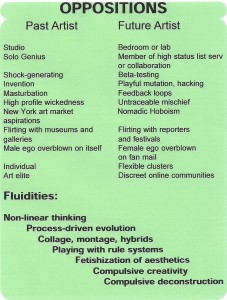
First. The term “filter feeders” is used in nature to describe a group of animals which thrives on its ability to filter organic matter floating around them. From Wikipedia: “Filter feeders are animals that feed by straining suspended matter and food particles from water, typically by passing the water over a specialized filtering structure. Some animals that use this method of feeding are clams, krill, sponges, baleen whales, and many fish (including some sharks). Some birds, such as flamingos, are also filter feeders. Filter feeders can play an important role in clarifying water, and are therefore considered ecosystem engineers.” From Wikipedia: “In marine environments, filter feeders and plankton are ecosystem engineers because they alter turbidity and light penetration, controlling the depth at which photosynthesis can occur.[4]”
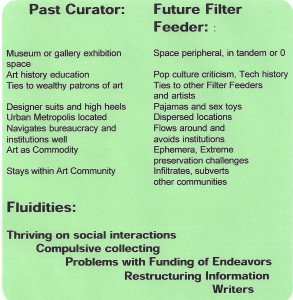
Second. If you re-read this last sentence slowly and look at what it could mean if applied to the field of content curation, it would read to me something like this: “In large information ecosystems like the web, filter feeders/content curators and content itself are ecosystem engineers because they: a) directly influence our ability to inform ourselves effectively and to discern truth from false and useless info (turbidity) b) shed light and clarity on different subjects which would otherwise remain obscure (light penetration) c) determine our ability to make sense of our own generated information streams (photosynthesis).” A very inspiring parallel indeed, giving a way to visualize the true importance and role that curation, disenfranchised from the confines of museums and art galleries, could have on the planetary information ecosystem. Anne-Marie writes: “Most web sites contain hyperlinks to other sites, distributed throughout the site or in a “favorites” section. Each of these favorite links sections serves as a kind of gallery, remapping other web sites as its own contents. Every web site owner is thus a curator and a cultural critic, creating chains of meaning through association, comparison and juxtaposition, parts or whole of which can in turn serve as fodder for another web site's “gallery.” Site maintainers become operational filter feeders, feeding of other filter feeders sites and filtering others' sites. Links are contextualized, interpreted and “filtered” through criticism and comments about them, and also by placement in the topology of a site. The deeper a link is buried, the harder it may be to find, the closer to the surface and the frontpage, the more prominent it becomes, as any web designer can attest to. I am what I link to and what I am shifts over time as I link to different sites… … In the process, I invest my identity in my collection – I become how I filter.” Anne-Marie vision (2003), pure and uninfluenced by what we have seen emerge in the last few years, paints a very inspiring picture of the true role of content curators and of the key responsibility they do hold for humanity's future. Inspiring. Visionary. Right on the mark. 10/10
Comments are more intelligent than the article.
Why open access makes no sense
There can be no such thing as free access to academic research, says Robin Osborne in Debating Open Access essays – research is a process that universities teach and charge for
Continue reading “Berto Jongman: From the English — High Idiocy on Open Access”

Rachel Botsman: How We Treat People Will Ultimately Drive Our World
Rachel Botsman advocated the advantage of reputation capital at Wired Money in London yesterday. She noted that an economy based on reputation is incredibly empowering, and will take us away from a financial world “based largely on faceless transactions and moving us to an age built on humanness that we [have] lost.” The reputation economy has already begun to take effect—Airbnb user Kate Kendall used Airbnb reviews to secure an apartment lease.
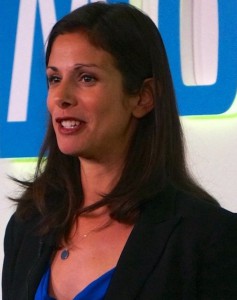
A reputation-based system will take time to establish, but has the potential to revolutionize the financial sector. This type of credibility adds “context, cause and character” to currently anonymous transactions. “How we treat people and how we behave will ultimately drive our world,” Botsman says.
![]() There are (almost) as many cell phone subscriptions as people
There are (almost) as many cell phone subscriptions as people
By Tyler Falk | July 2, 2013
Quartz dug up this graph from a new U.N. report showing the world’s rapid adoption of cell phones.
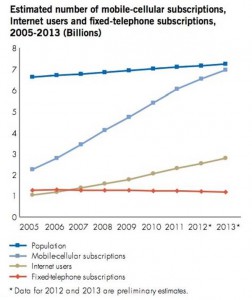
Yes, you’re seeing that right, there are almost as many cell phone subscriptions as there are people. It’s an astounding statistic considering that the number of cell phone subscriptions was only a fraction of the population in 2005. Now, the U.N. projects that there will be 6.8 billion cell phone subscriptions while our total population is just over 7 billion. However, subscription growth rates have fallen to their lowest level in the last year. Still, that puts global penetration of cell phones at 96 percent, 89 percent in developing countries. And it’s developing countries which account for over 77 percent of the world’s cell phone subscriptions and, increasingly, those phones are smartphones.
While cell phone use is impressive, we can’t overlook how quickly more people around the world are connecting to the Internet. There are now about 2.7 billion people using the Internet, up from around one billion in 2005. But while that number is growing, there are regional differences in who is connected and who isn’t. For example, 77 percent of the developed world is connected, while sub-Saharan Africa has the lowest rate with less than 20 percent of the population using the Internet, though Itnernet access is on the rise there.
[Read more from Quartz/U.N. report]
Continue reading “SmartPlanet: As Many Cell Phones as People, But….”

Internet Phases: Past, Present, and Future
Jeremiah Owyang
web-strategist.com, 11 June 2013
Thanks to you, last week’s report on the collaborative economy was readily received, and has been viewed over 26k times, the media picked up on it, and bloggers alike. As we digest what it means, it’s important to recognize this is the next phase in the internet, and the next phase of social business. An interesting finding is that the second era (social) and the third era (collaborative economy), use the same technologies (social technologies) but instead of sharing media and ideas –people are sharing goods and services. This is all part of a continuum and we need to see our careers progress as the market moves forward with us.
[Social technology enabled the sharing of media and ideas called social business –the same tools enable sharing of goods and services called the collaborative economy]
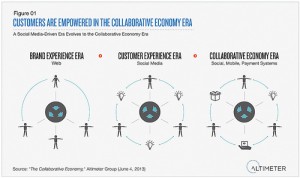
| Attribute | Brand Experience Era | Customer Experience Era | Collaborative Economy Era |
| Driving technology | CMS and HTML | Social Technologies | Social Technologies |
| Years | 1995: Internet had 14% american adoption | 2005: Business blogging disrupted corporations | 2013: AirBnb, TaskRabbit, Lyft, gain mainstream attention |
| What is shared | Vetted Information | Personal Ideas and Media | Goods and Services |
| Who shares | Few | Many | Many |
| Who receives | Many | Many | Many |
| What it looks like | Brands and media talk, people listen | Everyone talks and listens | Buy once, share many, need to buy less |
| Who has the power | Brands and publishers | Those who use social | Those who share goods and services |
| Who is disrupted | Traditional mediums: TV, Print | Corporations, governments | Corporations, governments |
| What must change | Media models | Communication and marketing strategy | Business models |
| How corporations responded | Created their own corporate website | Adopted social tools internally, externally | Learn to share products, enable marketplace |
| Software needed | CMS and design tools | SMMS, monitoring, communities | Marketplace, ecommerce, communities, SMMS, Monitoring |
| Services needed | User Experience, Design, Content | Social strategy, community managers, communicators | Agencies that help with trust, customer advocates, ? |
| Who wins | Those who adopt | Those who adopt | Those who adopt |
What it means to your career, clients, and company:
Continue reading “Jean Lievens: Internet Phases: Past, Present, and Future”